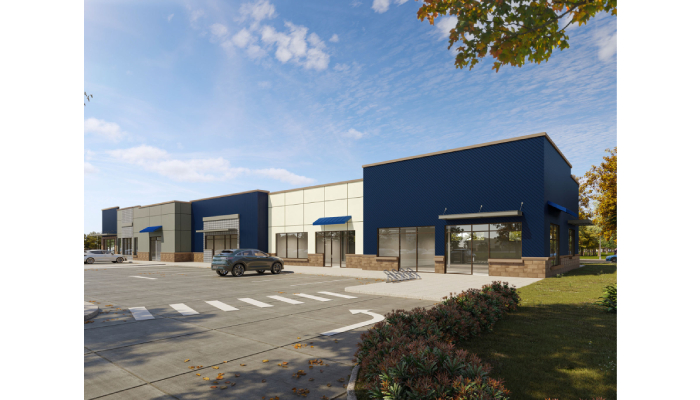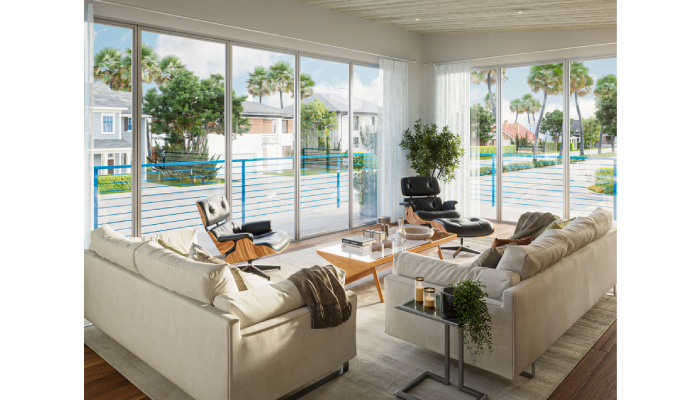
In the world of architecture, product design, and real estate, the challenge isn’t always building the final product — it’s often about getting people to see the potential of something that doesn’t exist yet. This is where commercial renderings step in, acting as a bridge between imagination and reality. From early-stage concept pitches to stakeholder buy-in, photorealistic visuals have become a crucial tool in turning bold ideas into actionable plans.
But the value of commercial renderings goes far beyond pretty pictures. When used strategically in the conceptual phase, they can help clarify ideas, reduce project risks, and foster deeper collaboration across disciplines. In this article, we’ll explore how early integration of visual rendering impacts design communication, decision-making, and project success.
1. Why Early Visuals Matter in Creative Projects?
Before budgets are approved or blueprints are finalized, most projects begin with a spark — a sketch, a mood board, or a vision. But getting everyone aligned around that vision can be surprisingly difficult. Stakeholders, clients, and collaborators all bring different perspectives and expectations to the table.
Early-stage commercial renderings help cut through this ambiguity. Whether you’re designing an office building, a retail interior, or a new product line, a high-quality render can serve as a visual prototype — one that communicates scale, style, lighting, and spatial relationships in a way words and 2D plans simply can’t.
Not only does this enhance clarity, but it accelerates conversations around feasibility, aesthetics, and budget. In essence, renders act as a visual language that levels the playing field between technical and non-technical stakeholders.

2. The Strategic Benefits of Rendering During Concept Development
When introduced early in the process, renderings are more than just visual aids — they become decision-making tools. Here’s how:
- Informed Iteration: Concept renderings allow teams to test and iterate design options quickly. Lighting, material finishes, furniture layouts — all can be previewed and adjusted without costly on-site changes.
- Client Engagement: A common pitfall in creative work is misaligned expectations. With renderings, clients can “see” what’s coming and provide meaningful feedback early on, reducing revisions later.
- Risk Mitigation: Projects that rely solely on technical drawings often leave room for misinterpretation. Renderings close that gap, helping prevent errors in construction or manufacturing due to unclear intent.
- Accelerated Approvals: Whether it’s a municipal board reviewing zoning plans or a retail team greenlighting a flagship store, visualizations make it easier to convey complex ideas and gain approvals faster.
3. The Role of Collaborative Feedback in Rendering Success
One of the often-overlooked aspects of commercial rendering is the process itself. How renderings are created — and who is involved — can greatly impact the outcome.
Traditionally, rendering teams work in a siloed, production-driven way: receive the brief, build the image, deliver the file. But modern design teams are increasingly embracing a collaborative rendering model, where feedback loops are integrated into each step of the process.
In this approach, clients and stakeholders are actively involved — not just at the beginning and end, but throughout. With tools like cloud-based review platforms and iterative previews, feedback becomes part of the creative evolution. The result? Renderings that are not only visually striking, but also strategically aligned with project goals.
This level of client-centric collaboration has been shown to improve outcomes and reduce friction — especially in large-scale commercial projects where every detail matters.
4. The Impact of Technology on Commercial Rendering Quality
The past decade has seen a technological leap in 3D rendering capabilities. Real-time rendering engines like Unreal Engine and Lumion, along with powerful modeling tools and AI-assisted post-processing, have transformed what’s possible — both in terms of speed and realism.
These advancements mean that even early-phase renders can achieve near-photographic quality, complete with realistic lighting, textures, and environmental context. And with virtual reality (VR) integration becoming more mainstream, designers can now immerse clients in a proposed space before it’s built.
This evolution is especially valuable in commercial settings, where stakeholders often need to be wowed before committing resources. With high-end renderings, designers are better equipped to tell compelling visual stories — whether pitching to investors or presenting at trade shows.
5. Beyond the Image: Commercial Renderings as Communication Assets
It’s important to recognize that commercial renderings are not just static images for client decks. They’re versatile communication assets that can be used across marketing, internal presentations, investor briefings, and even public relations campaigns.
For example:
- A retail brand unveiling a new concept store can use renderings in press releases or social media teasers.
- Architects can embed them in interactive walkthroughs for client approvals.
- Real estate developers use them in brochures to pre-sell units before construction begins.
By investing in quality renderings early on, companies can create content that serves multiple functions across a project lifecycle — multiplying their return on investment.
Conclusion
Commercial renderings are no longer a luxury reserved for final pitches or high-end developments. They’re becoming a standard — and essential — part of the design toolkit, especially in the early stages of creative projects.
By integrating rendering into the conceptual phase, teams can align faster, iterate smarter, and communicate more effectively. More than just visuals, these assets become part of the project’s storytelling fabric, shaping how ideas are understood, shared, and ultimately brought to life.